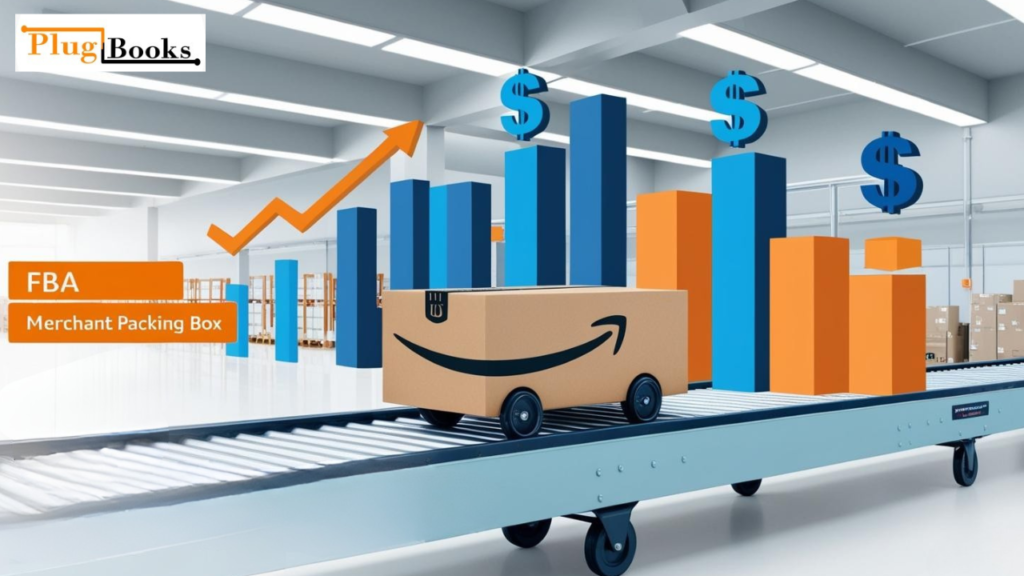Knowing Amazon shipping prices is crucial for sellers who wish to keep making money and pleased consumers in the fast-paced world of online buying. Staying current is more crucial than ever since Amazon lately modified its rates and introduced new initiatives. This article covers in great detail the present Amazon delivery rates, highlights significant developments, and offers advice on how to manage and cut your shipping costs.
Keynotes
- Amazon shipping prices will remain the same in 2025; so, you may budget for expenses.
- Reduced starting placement fees can help you save money when you send large, heavy items.
- FBA vs. FBM depends on your running of your company and your handling of logistics.
- Tools like Plugbooks.io help one better control and cut shipping expenses.
- Being a smart seller requires knowledge of any changes Amazon takes to its fees.
Understanding Amazon Shipping Price Structures
Factors including the weight and size of the item, the method of fulfillment, and the destination of the shipment affect Amazon’s shipping prices. Since 2025, Amazon has changed significantly how it charges for products.
- FBA Fulfillment Fees: Amazon declared that it will neither charge or add any additional delivery fees for independent vendors by 2025.
- Inbound Placement Service Fees: For minimum shipment splits, Amazon has reduced the inbound placement service rates for large, bulky items by an average of $0.58 per unit.
- Low-Price FBA Rates: The non-peak period 2024 On January 15, 2025, low-price FBA rates will begin to apply to products costing less than $10. These developments aim to provide sellers more security and consistency, therefore enabling them to create better financial strategies and control expenses.

FBA vs. FBM: Choosing the Right Fulfillment Method
Amazon offers two primary fulfillment methods: Fulfillment by Amazon (FBA) and Fulfillment by Merchant (FBM)
Fulfillment by Amazon (FBA)
- Pros: Giving Prime members access and quicker delivery options, Amazon stores, packs, and ships the goods.
- Cons: Particularly for things that don’t sell quickly, sellers have to pay costs for shipping and storage, which can mount up.
Fulfillment by Merchant (FBM)
- Pros: Fulfilment by Merchant (FBM) has pros in that sellers have more control over their inventory and shipment, hence perhaps reducing expenses.
- Cons: Logistically speaking, maintaining care can take a lot of time; some things might not be prime for delivery. Your company strategy, the kind of goods you offer, and your ability to manage logistics will determine which of FBA and FBM you decide upon.
Strategies to Optimize Your Amazon Shipping Prices
To manage and reduce your Amazon shipping prices, consider the following strategies:
1. Optimize Packaging: Use appropriately sized packaging to minimize dimensional weight charges
2. Monitor Inventory Levels: Avoid long-term storage fees by regularly reviewing and adjusting inventory levels
3. Leverage Amazon Programs: Participate in programs like the FBA New Selection Program to benefit from fee waivers and discounts
4. Use Shipping Calculators: Utilize Amazon’s fee preview tools to estimate shipping costs accurately
5. Analyze Sales Data: Regularly assess sales and shipping data to identify cost-saving opportunities

Plugbooks.io: Streamline Your Amazon Shipping Cost Management
Managing Amazon shipping prices can be overwhelming, especially with fluctuating rates and different fulfillment options. This is where Plugbooks.io helps. Plugbooks.io aims to simplify the connection between Amazon sellers’ accounts and well-known accounting programs like QuickBooks. This provides you strong understanding and control over your shipping expenses.
- Real-Time Expense Tracking: Stay on top of your shipping costs across all sales channels with live updates.
- Automated, In-Depth Reporting: Generate comprehensive reports to identify trends and understand your cost breakdown.
- Smart Cost Optimization: Unlock actionable insights and personalized suggestions to reduce unnecessary shipping expenses.
Plugbooks.io provides sellers with tools and knowledge to make decisions grounded in statistics, cost control, and income generation. Whether you use FBA or FBM, this platform transforms the game for better handling your Amazon delivery strategy.
Conclusion
Amazon shipping prices are structured and will help you greatly affect your bottom line. Whether you choose FBA or FBM, your profit objectives and handling of logistics will determine how best to satisfy your orders. The weight and size of the goods as well as the shipment location determine your whole shipping expenses. Salespeople who want to be ahead of the curve must monitor pricing changes and base wise decisions on data.
This is where Plugbooks.io comes in it helps you track shipping expenses by working flawlessly with both Amazon and QuickBooks. With real-time tracking, automatic reports, and optimization advice, Plugbooks.io lets merchants control expenses and increase income. Although shipping can be challenging, you can simplify it and get a competitive edge by keeping informed and applying appropriate tools.
Disclaimer
On this blog, only valuable information is available. Amazon might occasionally adjust its policies and rates of charge. Consult the official Amazon Seller Central page always. One free tool for tracking and researching shipping costs is Plugbooks.io. Consult a specialist whenever you need assistance determining the finest methods of pricing and shipping goods for your company.




